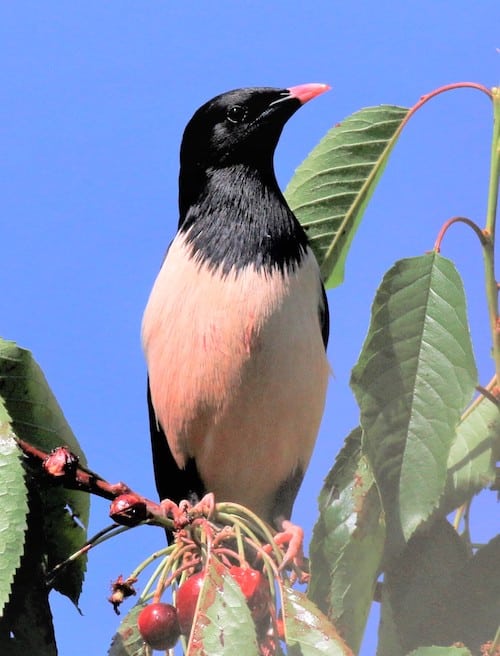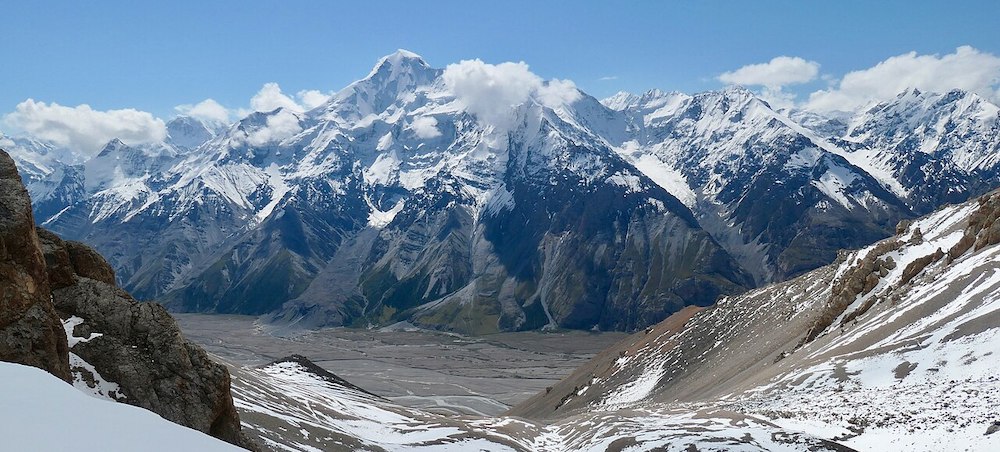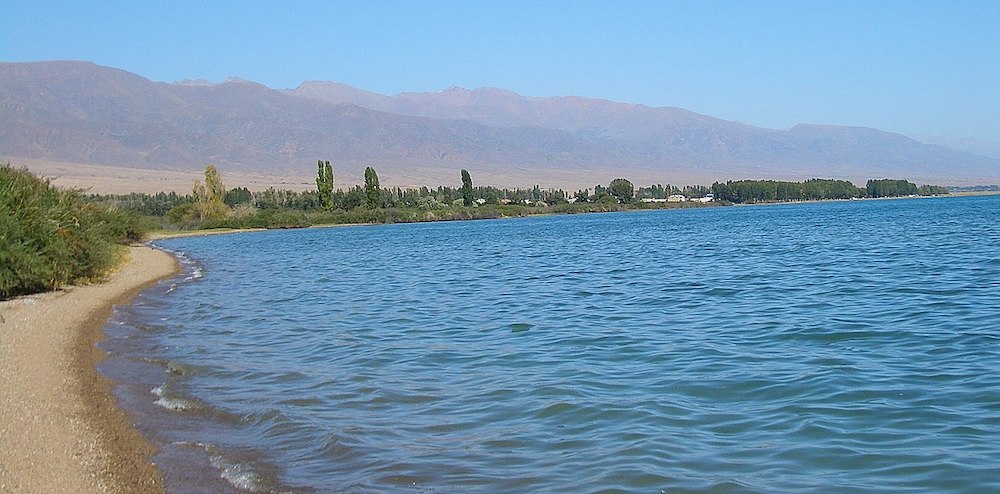Kyrgyz Republic

Kyrgyzstan is a landlocked country of just under 200,000 K² in Central Asia, lying in the Tian Shan and Pamir mountain ranges. Bishkek is the capital and largest city with just over one million inhabitants. The second city is the ancient town of Osh, located in the Fergana Valley near the border with Uzbekistan. Kyrgyzstan is bordered by Kazakhstan to the north, Uzbekistan to the west, Tajikistan to the south, and China to the east and southeast. Ethnic Kyrgyz make up the majority of the country’s less than 7 million people, followed by significant minorities of Uzbeks and Russians.
It is farther from the sea than any other individual country, and all its rivers flow into closed drainage systems which do not reach the sea. The mountainous region of the Tian Shan covers over 80% of the country (Kyrgyzstan is occasionally referred to as “the Switzerland of Central Asia”, as a result), with the remainder made up of valleys and basins.
Issyk-Kul Lake, or Ysyk-Köl in the north-eastern Tian Shan is the largest lake in Kyrgyzstan and the second largest mountain lake in the world after Titicaca. The lowest point is in Kara-Daryya (Karadar’ya) at 132 meters and the highest peaks are in the Kakshaal-Too range, forming the Chinese border. Peak Jengish Chokusu, at 24,406 feet, is the highest point. Heavy snowfall in winter leads to spring floods which often cause serious damage downstream. The runoff from the mountains is also used for hydro-electricity. Kyrgyzstan has significant deposits of metals including gold and rare-earth metals.

Tian Shan Mountains – ©Bruno Rijsman CC BY-SA 2.0 via Wikimedia Commons
Due to the country’s predominantly mountainous terrain, less than 8% of the land is cultivated, and this is concentrated in the northern lowlands and the fringes of the Fergana Valley. The principal river is the Kara Darya, which flows west through the Fergana Valley into Uzbekistan. Across the border in Uzbekistan it meets another major Kyrgyz river, the Naryn. The confluence forms the Syr Darya, which originally flowed into the Aral Sea. As of 2010, it no longer reaches the sea, as its water is withdrawn upstream to irrigate cotton fields in Tajikistan, Uzbekistan, and southern Kazakhstan. The Chu River also briefly flows through Kyrgyzstan before entering Kazakhstan. Kyrgyzstan contains seven terrestrial ecosystems: Tian Shan montane conifer forests, Alai-Western Tian Shan steppe, Gissaro-Alai open woodlands, Tian Shan foothill arid steppe, Pamir alpine desert and tundra, Tian Shan montane steppe and meadows, and Central Asian northern desert.
The climate varies regionally. The low-lying Fergana Valley in the southwest is subtropical and extremely hot in summer, with temperatures reaching 40 °C. The northern foothills are temperate and the Tian Shan varies from dry continental to polar climate, depending on elevation. In the coldest areas, winter temperatures drop below freezing for approximately 40 days, and even some desert areas experience constant snowfall during this period. In the lowlands the temperature ranges from around −6 °C in January to 24 °C in July.
Birding Kyrgyzstan
Considering the size and location of Kyrgyzstan the number of species that can be encountered is quite good, over 400 species have been recorded (Lesser Sand Plover, Ibisbill, Demoiselle Crane being notable examples). The avifauna is influenced by the Himalayas as well as by the birds breeding on the Siberian taiga and Kazakh steppes that migrate through the mountain slopes. The avifauna is mainly familiar with the European species but some interesting subspecies occur of course, (such as the Common Starling race porphyrnotus that looks like a Spotless Starling).

Issyk-Kul Lake – ©Vmenkov CC BY-SA 4.0 via Wikimedia Commons
Issyk-Kul Lake is good for many breeding birds like Common Redshank, Kentish Plover, Common Snipe, Little Bittern, Ferruginous Duck and Demoiselle Crane that breeds in the foothills near the lake. In the reed beds Paddyfield Warblers sing together with Cetti’s Warbler. Wintering birds can be seen near the lake, and you can expect some real good surprises. Small numbers of Ibisbill and Solitary Snipe winter near the lake. Also, Pallas’s Gulls and White-tailed Eagles are frequent visitors.
The mountains of Kyrgyzstan show a diversity in typical Himalayan mountainous species and western palearctic species. Expect to see Ibisbill, White-winged Crossbill, Himalayan Rubythroat, Black-throated and Himalayan Accentors, Guldenstadt’s and Eversmann’s Redstart, Upland Buzzard and many species of Rose-Finches and the big and strong Himalayan Griffon Vulture to mention just a few of the special species.
There also scarce European species like Rock and Pine Bunting, Lammergeier, Black Vulture and Chough to be seen.
Despite having eleven IBAs with a total area of 1,880 km² Kyrgyzstan is, ornithology speaking, undiscovered as it is so under-watched, so new discoveries are still being made. Little by little the country is being discovered by birders from Europe but still it remains completely unknown to most.
-
Number of bird species: 430
(As at July 2024)The National Bird is Gyrfalcon Falco rusticolus
-
Avibase
PDF ChecklistThis checklist includes all bird species found in Kyrgyzstan , based on the best information available at this time. It is based on a wide variety of sources that I collated over many years. I am pleased to offer these checklists as a service to birdwatchers. If you find any error, please do not hesitate to report them. -
Kyrgyz Birdwatching Community
ChecklistThe Checklist of the Birds of Kyrgyzstan -
Wikipedia
Annotated ListThis is a list of the bird species recorded in Kyrgyzstan. The avifauna of Kyrgyzstan include a total of 427 species. -
eBird
iGoT ChecklistThis checklist is generated with data from eBird (ebird.org), a global database of bird sightings from birders like you. If you enjoy this checklist, please consider contributing your sightings to eBird. It is 100% free to take part, and your observations will help support birders, researchers, and conservationists worldwide.
-
Birds of Central Asia
| (Kazakhstan, Turkmenistan, Uzbekistan, Kyrgyzstan, Tajikistan, Afghanistan) | by Raffael Ayé, Manuel Schweizer & Tobias Roth | Helm Field Guides | 2012 | Paperback | 336 pages, 141 plates with colour illustrations; 14 colour photos, 5 b/w illustrations, 3 colour maps, colour distribution maps | ISBN: 9780713670387 Buy this book from NHBS.com
-
Kyrgyz Birdwatching Community
WebsitePart BLOG, part Forum, part listing site. Includes a 'Big Year' for bird photographers, reports and more. -
Kyrgyz Ornithological Society
Facebook PageKyrgyz Ornithological Society (KOS) is an memberbased NGO with focus on birds. We promote awareness about and interest in wild birds and nature conservation in Kyrgyzstan. -
OSME
WebpageImportant bird and biodiversity areas: 11 IBAs with a total area of 1,880 km2
-
BR NR Sary-Chelek
InformationSatellite ViewThe Sary-Chelek Nature Reserve is located in Jalal-Abad Region in western Kyrgyzstan. In the central part of the Sary-Chelek Nature Reserve there are 6 small lakes: Kylaa-Kel, Aram-Kel, Cheychek-Kol, Bakaly-Kel, and Chacha-Kel. There is also comparatively large Lake Sary-Chelek. -
List of protected areas of Kyrgyzstan
InformationSatellite ViewList with links -
NP Ala Archa
InformationSatellite ViewThe Ala Archa National Park is an alpine national park in the Tian Shan mountains of Kyrgyzstan, located approximately 40 km south of the capital city of Bishkek. A small reservoir on the Kargay-Bulak river was built to study the Amu Darya trout. Other wildlife includes the very rare snow leopard on the alpine meadows and snowfields above 2,500m elevation, wild goats, roe deer and marmots. The snow leopard has been photographed by the park's camera for the first time in May 2017. -
NR Besh-Aral
InformationSatellite ViewBesh-Aral State Nature Reserve is in Jalal-Abad Province, western Kyrgyzstan. It currently covers 112,018 hectares. It was created to preserve the unique natural complex and forests of the Chatkal valley, as well as to protect the habitat of the Menzbier's Marmot and to protect the natural habitat of vegetation of Greig and Cauffman tulips. -
NR Sarychat-Ertash
InformationSatellite ViewThe Sarychat-Ertash State Nature Reserve is located in Issyk-Kul Region of Kyrgyzstan. he reserve currently occupies 134,140 hectares including 72,080 hectares of core area. The reserve was founded mainly to protect the endangered snow leopard and the argali, a large wild sheep of Central Asia. Other large mammals are Siberian ibex, wild boar, Eurasian lynx, Eurasian wolf and Eurasian brown bear. Smaller and medium-sized mammals, include red fox, pallas cat, stone marten, badger, Tolai hare and gray marmot. The reserve is strict and tourists are excluded. -
NR Surmatash
InformationSatellite ViewThe Surmatash Nature Reserve is located in Kadamjay District of Batken Province of Kyrgyzstan. The reserve occupies 66,194 hectares. -
NR WII Karatal-Japyryk
InformationSatellite ViewThe Karatal-Japyryk State Nature Reserve is located in Naryn Region of Kyrgyzstan. It was established to conserve the unique nature of Central Tien-Shan, and maintain regional environmental balance. The reserve currently occupies 21,016 hectares (51,930 acres) and consists of 3 areas Song-Kul, Karatal-Achatash, and Chatyr-Kul. The Chatyr-Kul area of the nature reserve is a Ramsar site.
-
eBird
SightingseBirding This Month
-
Calidris Birding Tours
Tour OperatorKazakhstan & Kyrgyzstan Birding Tour with Uzbekistan pre-trip extension -
FieldGuides
Tour OperatorA three-country tour exploring the scenic Central Asian steppes, deserts, canyons, and high mountains, for an enticing mix of localized resident species and northbound migrants, with the added cultural element of the beautifully preserved Silk Road cities of Samarkand and Bukhara. -
Kyrgyz Tourism
Tour OperatorMore than 350 species of migratory rare wild birds fly to Kyrgyzstan annually. For example, in Issyk-Kul, you can find different types of rare birds, including flamingos. The bird can be seen in Kyrgyzstan during both seasonal migration and wintering. -
Michael Westerbjerg Andersen
GuideIf you have only one day in Bishkek, we offer a variety of single day bird watching tours. We can offer a tailor-made bird watching tour according to the season, the time you have and the area of interest. Below are only some examples and recommendations for bird watching tours arranged by us. -
Miksture
Tour Operator4-days bird tour with Miksture - Eastern Kyrgyzstan’s pristine and beautiful landscapes -
NatureTrek
Tour OperatorA 13-day birdwatching holiday to Kazakhstan and the remote highlands of Kyrgyzstan for some of Central Asia's best birding. -
Oriole Birding
Tour OperatorIn the heart of Central Asia, we find the attractive countries of Kazakhstan and Kyrgyzstan (Kirgizia)... -
Rubythroat Birding Tours
Tour OperatorRubythroat Birding Tours offers all-inclusive, high quality bird watching and nature holidays in Central Asia. We organize fixed departure tours as well as private, customized tours for small groups. We can organise all tours of our travel programme for small groups, birdtour companies and even private tours are possible. All tours are lead by local experts and/or European top-ornithologists. Come and join us for the Switzerland ofCentral Asia - a plethora of birds and butterflies awaits you! -
Silk Road Birding
Tour OperatorJoin us in discovering a fascinating region and its fantastic birdlife -
Tenti
Tour OperatorExperience an exclusive 12-day birdwatching adventure in Kyrgyzstan, from June to September, meticulously crafted in partnership with the Bird Watching Society of Kyrgyzstan. -
heatherLea
Tour OperatorThis new and unique Heatherlea holiday will explore the rich splendour of Uzbekistan and the rugged beauty of Kyrgyzstan, all at a relaxed pace, staying in hotel accommodation throughout, and travelling between areas by a combination of modes of transport, including train – just watch as the impressive, open landscape rolls past! We will spend time in a variety of habitats from high mountains to deserts, and enjoy both the natural history and the culture of a part of the world which has remained a well-kept secret in recent history.
-
2019 [08 August] - Oscar Campbell
PDF ReportThis report outlines a short but reasonably wide-ranging visit to Kyrgyzstan, a spectacular and bird-rich country but one that is somewhat under-represented in terms of birding trip reports. -
2019 [08 August][ - Chris Seaton
PDF ReportTrip to: The oblasts of Bishkek, Chü, Ysyk-Köl, Naryn, Osh and Jalal-Abad in Kyrgyzstan -
2019 [08 August][ - Pete & Caroline Stevens
PDF ReportThis trip took us to the Southeast corner of Kazakhstan for the majority of our time with just a short foray into the Bishkek area of Kyrgyzstan. -
2022 [07 July] - Oscar Campbell
PDF ReportThis trip report covers a nine day visit to Kyrgyzstan, visiting mainly the Ala-Archa, Issyk-Kul, Jyrgalan and Song-Kul areas.

